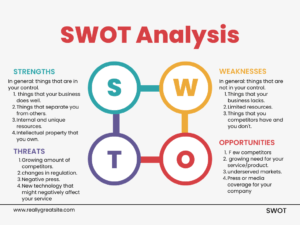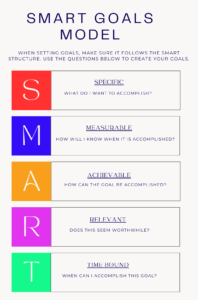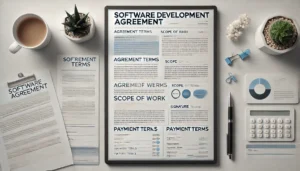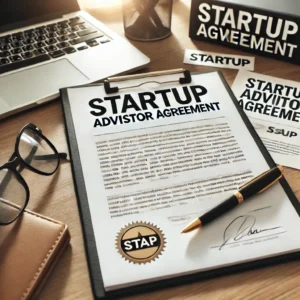A Complete Guide to Writing a Business Plan
Your Guide to Writing a Business Plan
In this post I’ll try provide you with a detailed guide to writing a business plan (“BP”).
Take a deep breath – the guidelines are lengthy (in order to make things easier for you) but writing the Business Plan isn’t that complicated (just take into account that it does take time, so I advise on taking ‘small bites’ and focusing on one part each time). The good news: the guide is very detailed + I’ve included links + this is the same guide that I give to my students in my “Entrepreneurship 101” course and they’ve all managed to write some really good business plans. The downside? Hmm? Maybe 2 small things: some of the sections in the business plan require that you know some additional topics. But in most cases you can find this information on the internet (I’ve included some links), or book me for a ‘private lesson’. The other small ‘downside’ is that you need to take into account that writing a business plan takes time! The upside is that you will learn a lot about yourself and your business – so depending on your needs (see next section) it might be worth it!
What is a Business Plan?
A business plan is a document in which you describe (in detail*) all the various aspects of your future business or startup (and sometimes your current business). These aspects include topics such as what your business does (what’s the service or product)? Who is the business intended for (your target market)? How do you intend to enter the market (market penetration)? Who are your potential partners/suppliers? What are your expected costs and profits (financial analysis)? and a few other aspects which I will describe here below.
* Unlike some other documents, the Business Plan is fairly long and can be anywhere from 9 pages (which is considered short) to 50 pages or more. It all depends on who is asking for it, what you need it for and the type of business/industry.
Why do I need a Business Plan?
There’s a lot of debate as to whether or not we still need business plans. I won’t go into all of these reasons because it will make this post too long, but I’ll just say this: business plans where once the ‘go to’ document for banks, VC’s, private investors and companies. Today, a lot of these organizations (especially VCs) are realizing that Business Plans aren’t necessarily the best option and aren’t always needed. For example, if you’re a startup, then in all likelihood you DO NOT need a Business Plan. Instead, you need to write something call “BMC” – Business Model Canvas which has become the standard for startups.
One of the problems with writing a Business Plan is that they are static (as in the they don’t change with what’s happening ‘in the field’) and also: they’re more suited to situations in which you’re establishing a known type of business (which usually isn’t the case with startups). So, if you’re opening a Pizzeria, shoe store, cleaning company and any other ‘classic’/known form of business, then a Business Plan may indeed be what you need. If you’re working on a startup which has a new business model, your best bet would be a BMC. To better understand if/when you need a business plan, watch the below video.
So, if I’m saying that you don’t need one, why am I writing this guide to writing a Business Plan then? Well, because even though a lot of places are realizing that the BP isn’t needed (and they don’t even read them), many of them still ask for a Business Plan for 2 main reasons: it makes them feel safe, and: it makes you (the business owner) do a ton of work – which shows them that you’re serious.
The bottom line is that many of the businesses, startups and entrepreneurs that I accompany as startup lawyer eventually need one. This usually happens when they start raising money, which is why I wrote this guide to writing a business plan.
Writing a Business Plan – Let’s start…
Congratulations! You’ve chosen a team (or going it alone which is also cool). Thought of an idea that is going to change the world (or maybe you ‘just’ want to sell the best Pizza ever or provide the best coding service), and perhaps did some initial research or maybe even conducted a proof of concept (POC) (see my article on Validating your idea). Now you’re all ready to start writing your business plan in order to get to know your market better, improve your business and/or raise money from investors.
Now the question is how do you do it? Here we go. Good luck.
______
Technical Notes:
* Length of each section: I have given you an estimate of the desired length of each chapter/section. You can make the section slightly longer if you feel the need, but I wouldn’t write a lot more as people today don’t have the patience to read lengthy documents (yes, I know this post is super long, but it’s for you so zip it!)
** There may be mentions of some subjects or models that you haven’t heard of and aren’t familiar with. In some cases I included links, and if not you can read about them on the Internet. Alternatively, you are welcome to schedule a paid ‘private lesson’ with me via Zoom during which I can help you catch up on what you’re missing. Usually 1-2 hours is enough (but it depends how much information you’re missing).
Part A – the Executive Summary (Up to 1 Page)
The executive summary (“ES”) is the first section of the BP and summarizes the entire BP. The people who receive BPs (investors, VCs, banks etc.) usually receive hundreds of them each month, and therefore usually won’t read the entire BP (at least not in the beginning, and unless the executive summary intrigues them enough to do so). Therefore, the ES is very important.
Pro Tip: even though this is the first section when writing a Business Plan, I recommend that you write it only after you’ve completed all the other sections. This way you will have a better understanding of what you wrote and will be able to summarize better. also, it is preferred (although not compulsory) to have a correlation between the order of things presented in the BP and the executive summary.
The Executive Summary should include the following information:
- Opening paragraph – The opening paragraph should be the ‘hook’ paragraph – meaning something that gets the reader ‘hooked’ and causes them to read on. Just as any good article begins with an intriguing/shocking fact or anecdote, so should the executive summary. For example: “According to a comprehensive study by the Wall Street Journal, 80% of people suffer from/have stated that…This is where [name of your business] comes into the picture..“.
- A description of the problem or market need;

- What the business does and how it solves the problem/need that you mentioned above;
- The current state of the market, and the business opportunity (why to invest);
- Financial aspects (how much money is there/has been invested, how much is needed, how much you are asking for…);
- Who comprises the management team – very briefly and only the things that are relevant to the success of the business.
Bottom line: write clearly and concisely, and make the investor see your vision and want to be a part of it (“you had me at hello…”). It is crucial that the problem and market are clear (see some pro-tips here below)
- Description of the problem/market need (up to ¾ page)
Describing the problem or need is one of the most important parts of the BP (and in a startup in general). In this section you must prove that there is a need or problem that requires a solution and describe (the problem) clearly. It is advisable to prove that your need or problem exists by providing the results of independent research/surveys that you did.
What matters: Showing that there is a real problem/need and that it is significant enough (from a business point of view). If the investors think there is no real problem, or that the need is not big enough or profitable enough, they will not invest in the business. Additionally: apply the “Grandmother Test” – If your grandmother, or a 15-year-old, doesn’t understand the problem, then you haven’t described it clearly enough.
- Description of the business and how it solves the problem/need in the market (Up to ¾ page)
This is the “business card” for your venture/business. Where you present the idea and the general concept. This section should include:
- What the product or service does;
 Additional information for understanding the business;
Additional information for understanding the business;- How the product/service actually works or how it is used. If needed, use illustrations (in the appendix. It is highly advised, but not compulsory, to use “Hyperlinks” which lead the reader directly to the relevant page in the appendix).
- What technologies/components are behind the product/service.
Bottom line: It is important that the potential investor (1) understands what the business does; (2) how the business solves the problem/need, and (3) that the investor falls in love with the business. The ‘Grandmother Test’ is relevant here as well because if the investor doesn’t understand the problem or doesn’t feel that it is indeed serious enough, they won’t invest.
Part C – Market Analysis
- Macro level (Up to 1.5 pages)
In this section you will describe the industry that you’re in (its’ current state), without referring to your specific business (meaning that you need to focus on the industry and not talk about your business’ place in it). Changes at the macro level affect all the businesses in the industry, while changes at the micro level (next section) affect specific businesses. Imagine that the title of this section is: “10 Important/Interesting Facts About the Dating app industry” and then talk about those facts without mentioning your business.
- Present at least 5 current facts about the present state of the market. These facts must provide information in the following areas: political (whether the industry is affected by political changes), social (e.g. trends, consumer habits), financial (needed/existing resources, market size, profitability – of the market, average price the consumer pays for services in this industry, taxation, etc.), technology (what technologies are available in the market, what is the pace that these change, etc.) and legal (e.g., regulation affecting market entry or its conduct – this can be covered briefly because there is a separate section which covers the legal aspects).
Short Example: The shoe market in Japan is a 200 million US Dollar per year industry (economical aspect). The average cost per shoe is $50 (economical aspect). 93% of the purchases are done physically (in store), and 7% are done online (social aspect – consumer habits). The production method of the average shoe is done with X-type technology which has been around for approx. 30 years, but now there is a shift to Y technology (technological aspect).
- Competition: The nature and type of the competitors (not specific competitors to your business). For example: how many companies exist? Do any of them dominate the market? How easy/difficult is it for new competitors to enter the market?
- Import/Export/Service providers: If your product is based on the import of products/parts, or on other vital service providers, then explain (briefly) how much the business relies on this and other relevant information (for example, whether there is one or many import sources).
* When writing a business plan, some people tell me that they can’t compare the industry because nothing like what we’re doing exists. In most cases, your idea WILL be similar to existing concepts (even if you really want it to be unique). In the odd case that your business is indeed an innovative and new concept, then do the macro analysis based on the most similar market that exists.
** You can add visual aids such as tables or graphs. Include short explanations to them, unless they are 100% clear.
Bottom line: The reader needs to understand the current state of the market objectively and clearly – taking into account the various fields/categories mentioned above (financial, economical…).
- Analysis of the market – at the Micro level (Up to 1.5 pages)
In this section you need to focus on analyzing the market, but with a look at the more immediate environment, and with reference to your specific business. This means that you need to show the market and how your business ‘fits’ in it or compares to existing players in it. You need to address the following issues:
- The anticipated product lifecycle (your estimations regarding the user adoption rate, the business’ competitive advantage, entry barriers for businesses like yours (if there’s anything specific that you did not already address in the above Macro analysis).
- Direct competitors – create a competitive analysis table. This is a comparison table in which you compare at least 3 main competitors (based on at least 5 different criteria). See examples here.
- Customers – how are they segmented (divided) and what type of customers do you have? Are they private customers or businesses? Are there many random customers, or specific/individual (but bigger) customers? For example, your business might be the type that sells thousands of products at small amounts to many customers (like a pizzeria). Or it might be the type that sells an expensive/unique product/service to only a few hundred customers (like heavy machinery or cyber security software. something ay be (but larger in purchasing power)? High or low level of loyalty/ retention? What are the transition barriers? Meaning how difficult is it moving from your competitors to you, or from you to your competitors?
Bottom line: the reader needs to understand the current state of the above aspects in relation to your business.
- SWOT analysis (Up to 1 page)
SWOT is a quick method to help you understand (and visually see) the Strengths, Weaknesses, Opportunities and Threats to/for the business. This is a table (see

- Summarize (briefly!) all the important facts that you’ve presented until this section by using the SWOT analysis. You are required to provide at least 2 aspects/points per each category (strength, weakness…), and a maximum of 4 aspects.
Pro-tip: Until this section, you should not repeat the information that you’ve presented so far. This section can and should include some of the information presented in earlier sections.
Bottom line: make sure that you are actually presenting a strength (for example) and not something else (there are clear definitions as to what consists of a strength/weakness etc.).
Here are 2 articles that explain the topic well:
- https://articles.bplans.com/how-to-perform-swot-analysis (including the video)
- Swot Analysis
Part D – Business and Marketing Strategy
- Business Model (Up to 1 page)
- A general, concise explanation of the business model that you selected for your business (examples of the types of business models here).
- How the model works in the context of your business (most models will be known to the person reading the business plan, but it is not always clear how the models work with your specific business).
- Why you chose this model in relation to your specific business and the market.
- If your model changes with the growth of the business, and acquisition of users (see ‘Rogers Adoption model’), this change should be addressed (no need to actually mention the Rogers Adoption model but you should be aware of how it works – at least the basics). For example, if you have a smart watch business venture, and your business model is the watch itself (sales of a product), but once you reach a certain amount of people, the model changes to a SaaS (software as a service) model in which you charge a monthly fee for apps or services on the watch, then this should be reflected.
* It is ok to have more than one business model but having more than 2-3 would be surprising.
Bottom line: The model needs to be clearly explained, including the reason that you chose the model for your specific business – unless it is obvious (the explanation should preferably be backed by data).
- Market Penetration Strategy (up to 1 page)
In this section, you need to show and explain your strategic goals and objectives regarding how you plan to penetrate the market / get clients / customers. This explanation should be somewhat based on the SMART model*
* This is a model that helps you clarify your target goals. The letters refer to your goals which should be Specific, Measurable, Attainable (meaning realistic), Relevant and Timebound (meaning that for each goal you have a reasonable deadline). You need to specify how you intend to achieve each goal, according to the following topics:
- What the marketing method will be (and why). It’s not enough to write “Instagram because all the young people use it” – you must elaborate and substantiate your reasoning.
- Give an educated estimate regarding how long it will take for you to reach each goal (for example: It will take 6 months, from launch date, to reach about 1,000 users).
- Estimate the costs and budget needed to reach the goals you mentioned, based on practical market research that you conducted, price quotes that you received, and or actual campaigns that you ran (for example on Facebook or Google – you can also use some free tools to get price estimates). There is no need for complex excels or tables (in this section).
- Explain expect conversion (number of subscribers, purchases, etc.) by sample testing and/or other established data.
Bottom line: that the goals are feasible and that the market penetration method is realistic and based on recent data/experiments/research.
Part E – The Team & Legal Aspects (each part can be done separately)
- The team (Up to half a page)
- Who are the core team members, and what is each member responsible for.
- Specify how many employees you will need (and why), for each of the objectives/stages that you mentioned in previous sections.
- Legal aspects (0/5 – 1/5 pages – depending on how complicated your business is) – in this section you need to provide a brief overview of the legal status of the Venture – present and future. You need to include the following:
- Intellectual Property – is the product/service protected, or does it need to be protected (with patents, trademarks, etc.). You may (but don’t have to) also include information regarding cost estimates for registering a patent if relevant.
- What are the relevant risks, difficulties or legal challenges that your Venture faces? For example, when it comes to a financial advisory service, the company may be sued if a customer lost money – so they would need a good legal document protecting the company.
- What are the regulatory requirements (if any) and did you check what is required and receive or request the necessary approvals. For example, if your Venture is a medical device, many regulatory approvals are required.
Bottom line: to show the reader that you are aware of the legal challenges, have a basic understanding of the existing solutions and have mentioned (basic) solutions for them. For some of your Ventures it will be less substantial, for other Ventures it will be more.
Part F – Financial Aspects
- Financial review (Up to 1 Page) – the information for this section should be presented in an Excel table (which should be attached to the BP), together with brief explanations within the BP (in this section). Among other things, you need to explain the following:
- How you calculated the cost per unit/cost per month for the service (and what were your assumptions that lead to these numbers – the mathematical calculations will be in the Excel).
- What is the expected customer conversion rate for downloads, purchases etc. (explain your estimation)?
- Explanations regarding your main expenses and income (including the expenses you described in the market penetration section above).
- Possible funding sources (explain the calculations in the excel in your own words in the word document / the Business Plan).
- Expected revenue and the time frame until the Venture becomes profitable/break-even. In this section, you need to elaborate on the revenue, and explain, among other things, the sales forecast, rate of sales, price per unit/subscription, etc.
Bottom line: the reader needs to understand all the financial aspects of the Venture within 5-10 minutes of reading this section and the Excel table – this includes understanding when you become profitable and how much money is needed to reach that point.
[You can purchase a ready-made excel file from me which includes almost all the fields you’ll need for your business + the formulas, for a one-time fee of $59 USD, or spend about 5-10 hours making your own. You decide how much your time is worth :-)]
Pro-tip: you need to build the Excel file so that a “sensitivity test” can be performed on it. For example, if your business model is based on the Affiliate Method (getting percentages for each sale/user you refer to a third party), and you assume in your calculations that you will get paid 5% or $5 for each referral, you need to be able to change the 5% to 3% and see how the rest of the data in the table (revenue, expenses, etc.) changes automatically. If not, fore every change that you make, you’re going to have to change a lot of things manually. In reality, the percentages/price/fee that you get will probably not be exactly as you expected and therefore you need to be able to play with the Excel table. For example, if your model is selling units of a product, then you should be able to change the price per unit or the number of units sold and see how it affects all other data.
Business Plan Template
Here are a few Business Plan Templates for your convenience. We have not reviewed them and we are not responsible for their quality, relevance, suitability, access etc…
Template One
Template Two – for a consulting services company.
Template Three – product company.
Template Four – full version. Not a great design but will help you with the layout.
If you’ve made it until here, then you shouldn’t have any problems writing a business plan and I’m sure it will be awesome! Good luck!
______
We consult and accompany hundreds of business, startups and companies. Feel free to contact us if you need any business or legal advice!
Disclaimer: The information provided in this document is provided for informational purposes only and should not be construed as legal and/or business advice and should not be relied upon as such. We will not accept any responsibility for any consequences whatsoever – direct or indirect – arising from your use of the information contained in this document and I highly advise you to consult with a professional before making any decision.
Copyrights: I hope that this document helps you with your future / current business. All rights in and to this document and its’ content (except for links to articles written by others) are owned by me – Attorney Assaf Ben-David. I hereby give you a non-transferable, non-exclusive, revocable, limited permission to use this document for your own personal and noncommercial You may not make use of the document (excluding the abovementioned personal use) without my prior written permission. If you want to use this document for commercial, teaching, business use or any other non-personal use, you are welcome to contact me, and I am sure we can find a solution.




